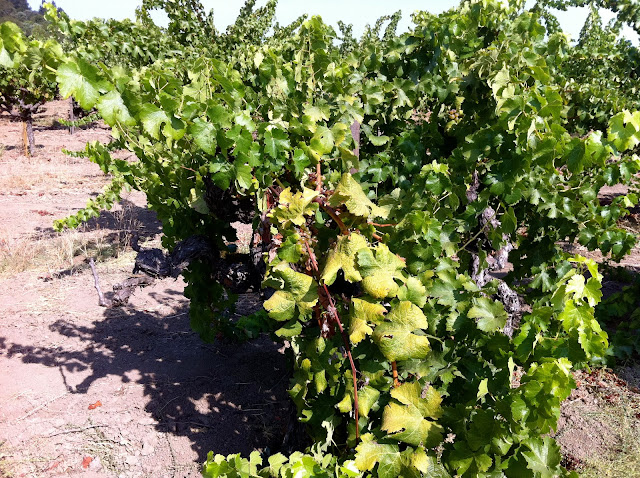No, Not really.
These are Real Wood Barrels. French Wood (wrapped in shiny plastic).
This is how they arrive at the winery from France.
Some places in Napa have started harvesting white grapes (sparkling wine, sauvignon blanc, etc.), since we only make red wine we are still in the calm before the storm. We are using the time to prepare this year's new barrels to be filled with 2011 wine. The barrels will not be filled until sometime between December or January but we need to process them in advance because it is a time consuming task and not something that can be done during harvest.
This would be a beautiful sight, except for all the work that it entails. Good thing we have interns.
Enter Madeleine. Madeleine is an intern this year, she comes to us from Switzerland. When barrels arrive from France they are all wrapped up and besides removing the packaging we need to prepare them to receive wine.
We prepare them by conditioning them with water to find leaks and remove residue from toasting (see video for details).

Even empty barrels can be heavy, so we move them with a forklift.
The forklift places 2 barrels on this red rack to be inspected and then filled with water.

We insert a lamp through the bung hole to check out the evenness of the toasting and make sure everything looks good inside.

These barrels are a medium toast.

This is the same barrel with different lighting.
Barrels are toasted by being placed over an open fire for defined amounts of time. Little time = light toast. Long time = heavy toast. And there are several shades in between.

Close up of the inside. The higher the toast level of the barrel, the more "wood" character it will impart on the wine. All kinds of flavor and aroma characters fall under "wood" like vanilla, cigar, smoke, tar, leather, etc. There is no "good", "bad" or "perfect" amount of toast, it all depends on the wine's style. In fact few wineries buy all their barrels with the same toast level. Typically you buy several different toast levels to give the winemaker options.

After they are visually approved, another intern (Shiri) fills them with 5 gallons of water at 180F. Shiri comes to us from Israel. (Hooray for ladies in the cellar!).
Here the protocol is 5 gallons per barrel, but I have worked at other places that fill the barrels (60 gallons) to check for leaks. Next the barrels are bunged and roll on the rack for 10 minutes. This allows us to see if there are any potential leaks.
After 10 minutes they are placed upright to check the integrity of the heads. Common areas for a barrel to leak are between staves and in the croze (the groove where the head meets the staves).
See diagram below:
If we find a leak it is best to repair it now using 5 gallons of water, than find it later when the barrel has 60 gallons of wine in it. If a leak is found, a senior cellar worker can usually fix it on the spot. We have spare shims and pegs to repair minor leaks.
If the barrel is sound it is moved to another area to be emptied of the hot water and rinsed with cool water. Then sent back into the cellar to be painted.
Below is some footage of the process:
-L
Up Next: Painting Barrels!






























